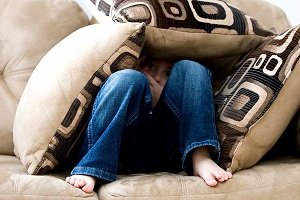How to Get Rid of Melancholia
TweetA mental condition characterized by extreme depression and feelings of hopelessness and worthlessness. It is especially a part of manic-depressive psychosis.
Current views are that the term neurotic depression is probably not useful because it covers several different disorders including, e.g., mild depressive episode, atypical depression and dysthymia. However the clinical syndrome of melancholic depression (major depression with melancholia in DSM-IV or depressive episode with somatic symptoms in ICD-10) as defined by symptom profile appears to have a number of validating characteristics that distinguish it from depressions lacking these features.
- Better response to somatic treatments e.g. antidepressant medication and ECT.
- Poorer response to placebo drug treatment
- More evidence of neurobiological abnormalities (decreased latency to rapid eye movement sleep, impaired growth hormone response to clonidine).
As mentioned above, it is possible that these characteristics simply reflect a greater severity of somatic or melancholic endogenous depression; nevertheless the predictions for treatment response can be clinically useful.
A kind of mental unsoundness characterized by:
- extreme depression of spirits,
- ill-grounded fears,
- delusions, and
- brooding upon a particular subject or train of ideas.
Many manic depressives long for the hypomanic states, and I would welcome them myself, if it weren't for the fact that they are usually followed by depression.
Clinical features of melancholic and somatic depression
Melancholic features (Dsm-IV)
- Loss of interest or pleasure in usual activities*
- Lack of reactivity to pleasurable stimuli*
plus at least three of the following:
- Distinct quality of mood (unlike normal sadness)
- Morning worsening of mood*
- Early morning waking*
- Psychomotor agitation or retardation*
- Significant anorexia or weight loss*
- Excessive guilt
- Marked loss of libido* (ICD-10 only)
* Somatic symptoms of depression in ICD-10 (atleast 4 required for diagnosis).
Depression is a more familiar state of mind to most people. Many experience it, and almost everyone has known someone to experience depression. Depression strikes about one quarter of the world's women and one eighth of the world's men at some time in their lives; at any given time five percent of the population is experiencing major depression. Depression is the most common mental illness.
However, in its extreme, depression can take on forms that are much less familiar and can even be life-threatening.
Criteria for Major Depressive Episode Melancholic Type
- Psychomotor retardation or agitation (not merely subjective complaints)
Melancholia Activa
A condition of mental depression occurring most frequently in women and men of middle age, characterized by a restless agitated state of misery with occasional outbursts of aggressiveness. The result of some prominent delusion.


Sometimes crying or laughing
are the only options left,
and laughing feels better right now.

Current Issue
 Self Help Leaflets Take the help of our self help leaflets or booklets. |
 The DG Magazine All about living with depression |


















